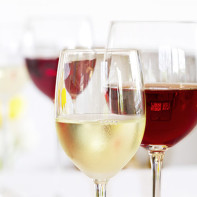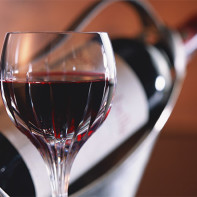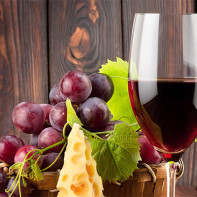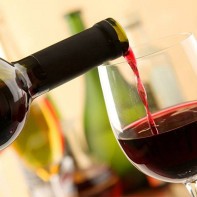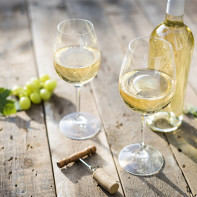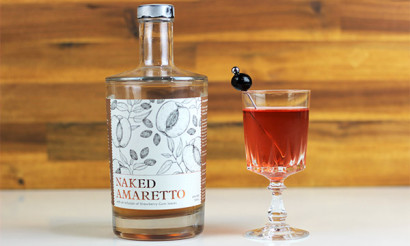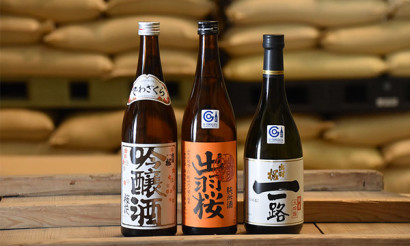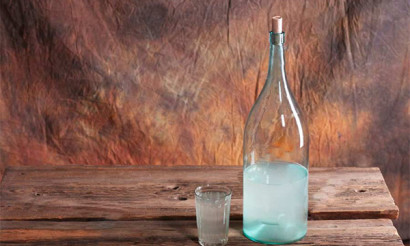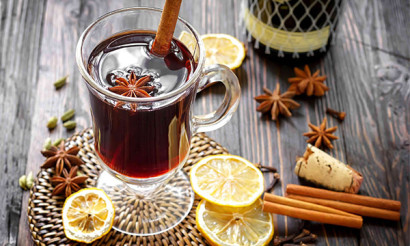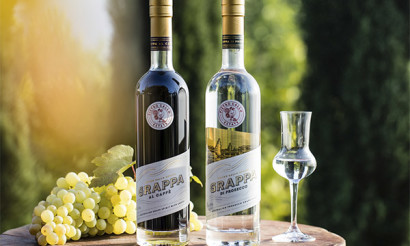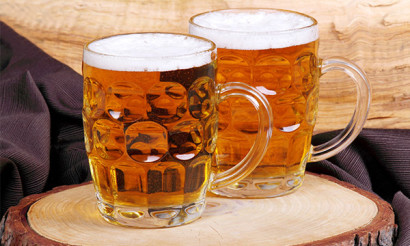How to drink wine correctly
In ancient times, wine was considered a unique drink that was endowed with magic and cunning. It was used as a magic elixir for various rituals, with the help of witchcraft. Nowadays the attitude toward wine has changed, but it has not lost its popularity. So where did this interesting drink come from?
- Types of wine
- Composition and calories
- How to choose and store wine
- How to test the quality of wine at home
- Choosing the right wine glasses
- How to open and pour wine correctly
- How to Drink Wine correctly
- What to drink with
- With what to snack on
- Can I drink wine?
- After beer
- After Champagne
- After a tooth extraction
- After a workout
- When taking antibiotics
- High blood pressure
- For diabetes.
- For gastritis
- For gout
- For pancreatitis.
- In pregnancy
- For breastfeeding
- When losing weight
- Fasting
- How much can I drink per day?
- Can I drink at night?
- Wine Cocktails and Recipes
- "Chocolate Kiss
- Spanish Cocktail "Calimocho
- "Strawberry Drive
- "Apple Pink Julep"
- "Cherry Island"
- "Stargazer."
- The Benefits and Harms of Wine
- Benefits
- Harm
- Interesting facts about wine
Scientists from different countries are still arguing about both the version of the origin of the word itself, and about the homeland of wine as such. According to one version, the word "wine" came from the Georgian "ghvivill", which means to blossom or ferment. Other evidence suggests a Slavic common root "vita. The Sanskrit root "vena" is also considered similar in sound.
As for the legends about the origin of the drink, there are a great many of them. This is because each nation considers its ancestors to be the inventors of wine. For example, in Greece it is believed that the ancestor of wine, or rather the one who planted the first vine, was a shepherd Estathilos. It was he who discovered the miraculous plant in the forest, planted it, cultivated it and made sap, which someone forgot to remove, and it fermented, giving the world the magical "potion".
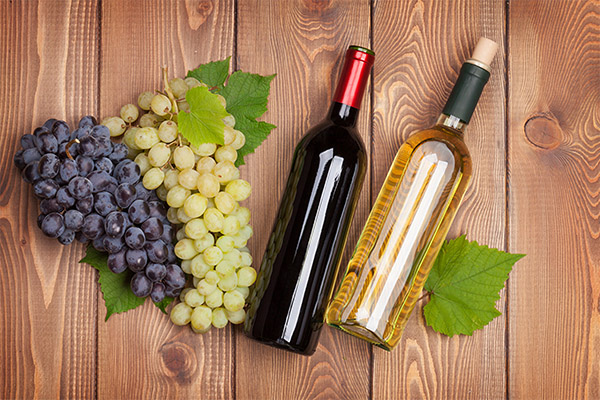
Ancient Rome believes that the first person to plant grapes was not man at all, but the god Saturn. It is him that people have to thank for the opportunity to enjoy wine drinks.
In the East it is believed that wine was accidentally discovered by one of the concubines of a certain king. The girl fell ill and decided that her days were numbered. She found spoiled juice in the basement of the palace, which had been removed and forgotten by order of the king, and drank the "poison. As a result, she fell asleep and woke up full of strength and health. That's when wine became widespread.
Types of wine
In any liquor store today there is a huge selection of wines, which, according to winemakers, are divided into 4 types:
- Table wines, which contain no more than 14% alcohol. This type includes Bordeaux and Rhine varieties.
- Sparkling. The name speaks for itself. It has the same value as a table wine, i.e. no more than 14% alcohol.
- Fortified wines. Their strength is already higher and varies from 16 to 21%. These are usually port and sherry varieties.
- Flavored wines. Their strength is 15.5-20% alcohol. These include vermouth.
Composition and calories
Wine is a product, so it also has its own unique composition and caloric value. It consists not only of water and ethyl alcohol, but also contains a huge number of useful trace elements, such as vitamins, flavonoids, trace elements, acids. If we take apart each group separately, the list turns out as follows:
- Malic acid.
- Lactic acid.
- Acetic acid.
- Citric acid.
- Vitamin A.
- Vitamin C.
- Vitamin B1.
- Vitamin B6.
- Vitamin B12.
- Vitamin B2.
- Vitamin B5.
- Vitamin PP.
- Flavonols.
- Anthocyanins (natural dye).
- Tannins - substances for the "preservation" of wine.
- Catechins.
- Copper.
- Iron.
- Calcium.
- Phosphorus.
- Magnesium.
- Sodium.
- Manganese.
- Zinc.
In addition, it should be noted that in red wines the number of useful compounds is much higher than in white varieties.
The caloric value and the number of carbohydrates per 100 grams are absolutely different in different varieties:
- Red dry wine contains 0.3 g of carbohydrates and 64 kcal.
- White dry - 0.6 g of carbohydrates, 66 kcal.
- Red semi-dry - 1.8 g of carbohydrates, 75 kcal.
- White semi-dry - 2.5 g carbohydrates and 78 kcal.
- Red semi-sweet - 4 g carbohydrates, 81 kcal.
- White semi-sweet - 6 g carbohydrates, 87 kcal.
- Pink - 6.5 g carbohydrates, 73 kcal.
- Red dessert - 20 g of carbohydrates, 167 kcal.
- Champagne brut - 1,5 g of carbohydrates, 55 kcal.
- Champagne dry - 1,8 g of carbohydrates, 75 kcal.
- Semi-sweet champagne - 2 g carbohydrates, 88 kcal.
- Port wine - 13,7 g carbohydrates, 167 kcal.
- Vermouth - 14 g carbohydrates, 140 kcal.
- Sherry - 13 g carbohydrates, 147 cal.
- Marsala - 20 g of carbohydrates, 172 kcal.
- Madera - 10 g of carbohydrates, 139 kcal.
These are the main indices of the beverage varieties. It is worth noting that fats are not present in the wine, and the amount of protein does not exceed 0.5 g. In addition, the higher the degree, the higher the caloric value.
How to choose and store wine
As a rule, people buy wine for festive occasions, parties or just to make dinner a little more pleasant. In this regard, the choice of alcoholic beverages should be approached responsibly enough, because on what bottle will get on the table, depends, if not the entire evening, then most of it exactly.
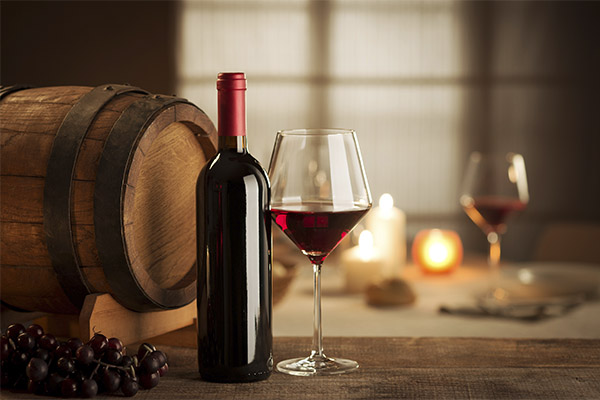
Experienced sommeliers when choosing wine in the store advise to pay attention to the label. Every bottle of quality wine should have two labels, one main and one additional. In professional language they are called front and back labels respectively. The label should contain information containing such items:
- manufacturer;
- region of production;
- year of harvest;;
- grape variety or other raw material;
- storage in barrel;
- percentage of alcohol.
It should also be noted that the use of small print on the label, its absence as such, incomplete information or generalized phrases (for example, that the best varieties of Georgian grapes were used in the making of the wine) indicate that the product is likely to be of poor quality. Such a wine can not only ruin the experience, but it can also be harmful to your health.
Other nuances:
- Labeling. In a quality product, it is always long, and the first letter should be as close to the beginning of the alphabet as possible.
- Packaging. It is desirable to choose a drink in an ordinary glass bottle without special excesses, because manufacturers, in order to "lure" the buyer, often make the packaging too prominent, and the wine in this case is not of the highest quality at all.
- Taste. If you have not defined your taste and preferences, it is better to choose red wine, because it is usually harder to spoil. And you should also pay attention to dry or sweet, which are almost always of excellent quality.
- Cork. It is not at all necessary to look for a bottle with a natural wooden cork. Modern technology has created corks that perfectly preserve the taste and aroma of the wine.
- Cost. Here is one rule: good wine cannot be cheap!
If a person buying a bottle of wine is not going to consume it immediately, he should know the features of the storage of the "potion". After all, it depends on them the preservation of all the taste qualities of the product:
- The temperature regime for dry wines should be from 10 to 12 degrees of heat, and for strong - from 14 to 16 degrees. It's worth specifying that the wine can't stand sudden temperature jumps and high temperature in general.
- The humidity must be 65-80%.
- Sunlight and artificial light must not fall on bottles with wine. This is especially true of white wines, as their susceptibility to light is much higher than that of red varieties.
- Long-term storage requires the horizontal position of the vessel, and for a short period of time you can put the wine in an upright position in a suitable bar or cabinet.
- Separately, we should mention plastic bottles, in which storage is not allowed, because it spoils the taste of the wine. Of course, you can buy bottled wine in this packaging from home winemakers, but when you come home, it is better to pour the drink into a glass bottle.
- Opened bottle with the drink should be stored in the refrigerator for 3-5 days. Too long a period is not allowed, because the oxygen that got inside, negatively affects the taste of the wine.
How to test the quality of wine at home
When you buy wine in the store, you don't need to run to a professional sommelier to find out about the quality of the drink. Experts say that there is a fairly simple algorithm of actions that help the average person to determine the quality of a wine product at home:
- Before the wine is poured, the bottle should be shaken well and then poured some into a glass. If the product is of good quality, the foam will be in the middle and will quickly disappear. With wine from cheap raw materials, foam forms on the sides and stays for a while.
- After the wine has been poured into the flute, you should rotate it with a slight tilt of the container. Traces will remain on the walls, and the longer they remain, the higher the quality of the drink.
- An excellent assistant in establishing a quality product can be an ordinary baking soda. One spoonful of wine should be poured on it and watch what happens. The real wine will react by forming a foam. The red "potion" will acquire a characteristic gray or bluish hue.
- You should also examine the bottle and cork. The cork should not have a musty smell and dried out appearance. In the bottle you should analyze the sediment. The wine might have sediment, but it should be not too friable and in small amounts.
- A good wine should have a long aftertaste and be viscous.
So, if the wine is purchased correctly and complies with all the basic indicators and rules of selection, then it will please the hosts and guests!
Choosing the right wine glasses
Choosing wine for the occasion, for example, is important, but no less important is the utensil for the drink, and more precisely the glasses, which should correspond to certain varieties of alcoholic beverages. As a rule, the containers for drinking wine have long stems, in order to avoid the contact of liquid with the warmth of human hand, because when heated and the taste and color of the drink change their data is not for the better.
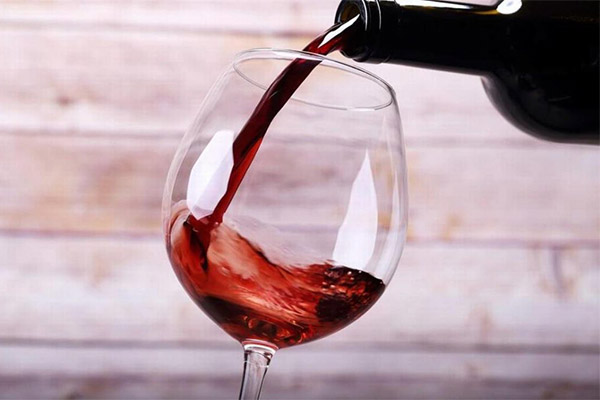
The shape of the glass is based on the taste receptors on the tongue, which are unevenly positioned. In order to really open up the bouquet of flavors, created different wine glasses. They differ in height, width and, actually, shape.
The most popular goblets are the Burgundy and Bordeaux types.
Burgundy glasses are spherical in shape, tapering at the top. Their volume can be around 0.9 liters. They are designed for refined wines with a light aroma and texture. This is the shape that helps to reveal the elusive smell of the product and better convey the exquisite taste.
The Bordeaux form is a flute of elongated shape. The walls of vessels are flat and their bottoms are wide. These goblets are suitable for all kinds of table wines, as well as for those with very rich flavor and aroma. The capacity varies from 0,45 l to 0,6 l.
These two forms of wine glasses are an excellent match for red wines.
For white wine you should choose smaller variants of the Bordeaux form, with a volume of up to 350 ml. Because white wines are served chilled, they do not have time to warm up in these kinds of glasses, which maintains their ideal drinking temperature.
Rarely do they choose to serve white wine in a Rhenish shot glass. The flute itself was created for Rhenish wines. It has an elongated shape and a volume of no more than 120 ml. Such glasses are usually made of multicolored glass.
For sparkling wines, experts recommend using flute glasses. These are narrow vessels with a small indentation at the bottom. This shape is designed to maximize the low temperature of the drink.
At large cocktail parties and large-scale celebratory dinners or lunches the champagne saucer is often used - a special kind of flute with a wide bottom and low walls. They are mostly used to create grandiose compositions, such as a pyramid.
For the dessert kind of white wine, the Sauternes glass, which has a narrow bottom and spherical top, is suitable.
Pink wine is poured in any kind of goblet. Bordeaux, burgundy, and white drink flutes can also be used.
Sweet alcoholic drinks with a noble "sound" are usually poured into a madera shot glass, the volume of which is 0,08 liters, has a wide bottom and small flat walls.
For sherry and port it is customary to use small flutes on a low stem with a narrow bottom and expansive walls at the top. The volume of such a vessel is 0.1 liter.
Also when choosing a flute you should pay attention to its material. It is best if the products are made of crystal, but not of colored glass, which will hide all the colors of the drink. And before you buy glasses, you should proceed from your alcoholic preferences.
How to open and pour wine correctly
After buying a bottle of wine and deciding on the glass, you can proceed to the process of opening and "pouring" the drink. This also has its own rules and features:
- The bottle should be placed on the table at waist level and wipe the neck with a cloth.
- The second point is the use of a corkscrew. This device should first be screwed into the cork by one turn, then slightly loosen it, after which the corkscrew should enter four more turns. It is necessary to be careful not to pierce the cork, because this will spoil the taste and appearance of the wine. Next, you should pull out the cork by about three quarters, remove the corkscrew, and only then open the bottle by pulling out the cork by hand. After that, you should wipe the neck with a napkin.
- When pouring the wine, you should make sure that the drink doesn't touch the foil on the neck of the bottle. The flute and the vessel with the wine should not touch, but be as close to each other as possible.
- The person pouring the wine should stand to the right of the guest. If there is no such a possibility, you should take a glass and pour the wine, holding it in the balance.
- White wine should be poured in two thirds of the glass. It is customary to fill half of the glass with red wine.
- First, the wine should be poured for the representatives of the beautiful half of humanity.
How to drink wine correctly
Nowadays the culture of drinking alcoholic beverages is almost forgotten, and in vain. It is necessary to be able to enjoy the taste qualities of an exquisite drink, and not to spoil a long-awaited evening.
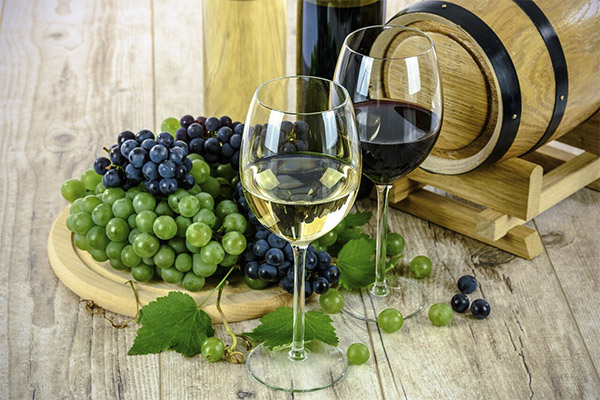
To experience the true pleasure of the drink, you should consume it at a special temperature:
- 13-15 degrees for red young wine.
- 15-17 degrees for aged red varieties.
- 7-10 degrees for sparkling, white dry and rosé drinks.
- 9-12 degrees for superior white varieties and sweet drinks.
Once the wine is in the glass, you should assess its appearance. To do this, raise the glass to eye level and determine the shine, the absence of bubbles (if it is not champagne) and sediment. Then take a deep breath and smell the aroma. A good wine is free from the smell of sulfur and yeast. Afterwards, turn the glass and smell the drink again. Only after that can you taste the wine by moistening the upper lip first and then tasting the wine so that it hits the top of the tongue. If there is a distinct separation of one of the components in the taste, the wine is probably not of very high quality.
In addition, you should not pour different types of drink into the same glass, because their flavor characteristics are lost, leaving a false impression.
What to drink with
The rules of drinking wine concern not only its serving, storage and consumption, but also what kind of food is served with this or that variety. In general, in different countries of the world, wine is served with the products that are commonly eaten according to the culinary traditions of the area. But there is an immutable rule for everyone: the nobler and more expensive the wine, the simpler the appetizer should be. Also, the food should not interfere with the taste of the drink.
Basically, the menu depends on the variety, strength and sweetness of the drink. For example, red wine is appropriate with meat dishes, and white wine with seafood or cold appetizers. For dessert, guests can be pampered with fortified drinks.
Cheese, fruit and bread will go well with any type of wine.
With what to accompany the dessert
After determining the type of wine and choosing the appropriate glasses, it is worth paying attention to the menu. For each kind of wine there is a list of dishes that best reflect the taste of the drink, without interrupting it and helping to open up completely.
Red semi-sweet wine is best paired, according to experts, with the following appetizers:
- seafood;
- vegetable salads;
- chocolate;
- Non-spicy cheeses;
- ice-cream;
- Fruit (pears, bananas, strawberries);
- dietary meat (for example, rabbit meat);
- Poultry.
To a dry red wine it will be appropriate to offer:
- meat;
- meat delicatessen;
- roll of chicken meat;
- nectarines;
- fruit, especially mango, plums, peaches;
- ripe, sweet cheese;
- Italian dishes.
Semi-dry red:
- cheese like Dor Blue;
- seaweed;
- oily saltwater fish;
- meat;
- Fruit and berry salads.
It is customary to complement sweet reds with the following dishes:
- tuna;
- salmon;
- ice-cream;
- cookies;
- kiwi;
- orange;
- meat.
Dessert red wines are consumed with the following foods:
- fresh bread with a crusty crust;
- sweet pastries;
- candy.
For white semi-sweet will suit the following dishes:
- fish in baked, stewed, fried versions;
- chicken;
- game;
- veal;
- pâté;
- seafood;
- young cheese;
- julienne.
White dry wine:
- Seafood, including caviar;
- poultry;
- fruit;
- natural ice cream.
A white semi-dry wine will enhance its flavor when served with such dishes:
- rolls;
- poultry;
- foie gras;
- sushi;
- creamy sweets;
- various types of sausages.
White sweets can be offered with:
- desserts;
- salty cookies;
- unleavened varieties of cheese.
Pink wine is better offered as an aperitif, combining it with such appetizers:
- poultry;
- Cheese (it is better to choose creamy varieties);
- pâtés;
- Creamy and fluffy desserts.
Sparkling wine:
- cookies of unsweetened kinds;
- Red low-salted caviar;
- young cheese;
- ice-cream;
- berry dessert.
So, properly chosen menu will complement the taste of the selected wine and help to reveal all the nuances of the drink.
Wine is known to be a special drink, which requires careful and cautious attitude. To make it beneficial and not to influence unfavorably on human health, it is necessary to remember the features of its consumption: with what drinks it can be mixed and with what not, what diseases it is able to cure, and which ones to provoke.
Can I drink wine?
So, it is necessary to understand the questions, when it is allowed to drink wine.

After beer
Lovers of these two popular alcoholic beverages, according to experts, should choose any one type of product, because. It is inadmissible to mix them because of the different brewing techniques. Everyone knows that beer is made from grains and wine is made from grapes. If a person mixes these two products, then nausea, and in some cases vomiting, and a severe headache with bouts of terrible hangover syndrome will be assured!
After Champagne
If a person is not afraid of losing the zest that is contained in the flavors of sparkling drinks, then after champagne you can drink those wines, the degree of which is higher. A well-known rule of all alcoholic beverages is that the degree can only be increased. Lowering it is fraught with health problems.
After a tooth extraction
A trip to the dentist - it's a real stress for some, and many people take tooth extraction for a disaster, experiencing a real fear of the doctor. Naturally, lovers of "stress relief" wonder about when they can recover with a "dose" of alcohol. Dentists are unambiguous in their answer: Drinking alcohol-containing beverages is allowed after a few days or weeks. The time period depends on the complexity of the surgery and the individual characteristics of the body.
After training
As you know, people who are engaged in sports should lead a healthy lifestyle, giving up bad habits. Of course, you can sometimes allow a glass of good wine in the company of close people, but here, after training it is better to give up this idea. The fact is that after visiting sports activities in the body increases the process of assimilation of useful substances, and wine leads to a kind of regression, disrupting the process of building muscle mass and carrying additional strain on human organs. It is better to skip a glass of wine on those days when there is no training. Then it will be both pleasant and harmless!
When taking antibiotics
There is a common opinion that taking strong drinks and antibiotics at the same time are not compatible. However, this is not entirely true. It is now established that alcohol has no effect on the administration of antibacterial drugs, with the exception of some of them. Drugs whose compatibility with wine is categorically contraindicated include the following:
- Metronidazole.
- Ornidazole.
- Tinidazole.
- Cefotetan.
- Erythromycin.
- Cimetidine.
- Voriconazole.
- Intraconazole.
- Keteconazole.
- Cycloserine.
- Ethionamide.
- Thalidomide.
Taking these drugs and alcoholic beverages is prohibited, because the negative consequences can lead to disruption of the liver, central nervous system, also possible intoxication and dehydration.
Of course, you should not rejoice and run to the store for a bottle of wine. There are doses that should not be exceeded - this is about 200 grams of wine, with a strength of no more than 13 degrees, but no more.
At the pressure.
Wine in an acceptable amount is quite useful for the body. Its positive effect also affects the health of people suffering from blood pressure failures. Depending on the variety, it can raise or lower the BP. It depends on the sweetness of the variety and the amount of fruit acids. So, red semi-sweet and semi-dry can be consumed by people with low blood pressure. Those who have high blood pressure can drink a dry or sour type of red wine. White wine, on the other hand, does not lower blood pressure. In addition, high blood pressure is a strict contraindication to the use of berry wines (strawberry, cherry, raspberry).
The daily rate for men is 2 glasses, and women are allowed to drink no more than one. In addition, the strength should not exceed 10 degrees.
It is strictly forbidden to drink wine to those who have been diagnosed with arterial hypertension of the second and third degree, with a blood pressure above 160. Therefore, before indulging in a glass of wine, you should measure your blood pressure and still consult your doctor.
In Diabetes
Patients with diabetes should seriously control everything that comes to their table. The same rule applies to wine. In general, the consumption of alcoholic beverages is undesirable, because it may provoke hypoglycemia. But if the desire is irresistible, then it is necessary to adhere to certain rules:
- Red dry wine is allowed.
- A safe dose is up to 200 ml.
- The frequency of consumption should not exceed three days a week.
- It is forbidden to drink on an empty stomach and after long food breaks, after physical activity.
- Before use, it is necessary to measure glucose levels.
- It is necessary to consult the attending physician.
- Dessert wines, fortified wines and sherry are not allowed.
In any case, before drinking an alcoholic beverage, even the highest quality, it is necessary to consult with a specialist to determine all the possible risks and establish the beneficial effect.
With gastritis
Gastritis is a reason to follow a diet and to refuse many, previously favorite dishes. As for alcohol, patients with reduced acidity in this diagnosis can consume 150 ml of wine, but once a month. Give preference to red dry wine, white and sparkling - under the ban. Alcohol is contraindicated in case of hyperacidity.
In case of gout
For a long time, alcohol in gout has been prohibited. Recent studies have also shown the negative effect of alcoholic beverages, and especially wine, on the aggravation of the disease. In extreme cases, it is allowed to take no more than 100 ml of dry white wine, and patients should forget about red wine altogether. It is also possible to drink a glass of drink after a gout attack not earlier than a month after this event. Thus, it is better to refuse from wine at this diagnosis completely!
In pancreatitis
Pancreatic gland function disorder associated with the replacement of tissue of the organ with fibrous tissue, is called pancreatitis. People who suffer from this disease must follow a special menu, so as not to cause a worsening of the disease. Under the ban are many products, including alcohol. Even a single intake of wine in small doses and low strength can adversely affect the health of such a patient. Therefore, taking any wine drinks is strictly forbidden!
When pregnant
Pregnant ladies are special women with strange cravings. Some of them are simply attracted to drink wine. What to do? Doctors unanimously urge expectant mothers to give up drinking wine to prevent complications during pregnancy and negative effects on fetal development. But there are, however, small indulgences - twice a week you are allowed to drink no more than 150 ml of table dry or semi-sweet wine. Dessert varieties should be abandoned. But there can be benefit from red wine, which used to be even recommended to drink once a day by a tablespoon to increase hemoglobin, improve hematopoiesis, remove toxins and reduce the risk of thrombosis. But nowadays, there are safer ways to prevent and eliminate these problems.
In the early stages of pregnancy, you should forget about all hot drinks altogether. Relaxation will be possible from the middle of the second trimester. The fact is that at the very beginning, wine can provoke disorders of the baby's nervous system, external defects, heart disorders. It is for these reasons that in order to keep and give birth to a healthy child, you should give up drinking wine, because human life is worth it!
When breastfeeding
In the body of a small person there are no enzymes that can break down ethanol. The long period of its elimination from the infant body increases the load on the brain and the immature nervous system. For these reasons, women in the period of lactation should refrain from drinking wine, especially during the first three months after birth. Do not forget that the use of wine can lead to allergies in the baby, disorders of digestion, poisoning, sleep disorders, failure of the nervous system, the destruction of brain cells, low blood pressure. In rare cases, for example, at a very festive event, it is possible to take one glass of dry white wine.
When losing weight
Most nutritionists consider it possible to drink one glass of dry wine at lunch. The only thing to pay attention to is the caloric content of the product. Specialists advise to give preference to a red drink, because it has no sugar and contains resveratrol, which starts the process of burning fat cells, accelerates the metabolism and prevents the aging of the body in general. You can also drink white dry wine or champagne "brut". But in any case you can consume no more than a glass of wine per day, not a bottle or two!
During Lent
Consumption of wine during Lent for people who are not alcohol addicted, according to the church canons, is allowed, but there are rules for its consumption:
- Abstaining from wine on the first day of Lent.
- On the second and third days it is allowed to drink only water.
- Wine may be consumed on Saturday and Sunday, but only in moderate doses.
- It is forbidden to drink alcohol on the first and last weekend of the fasting period, on the days of commemoration of especially revered saints, and on the great feasts that fall within the period of abstinence.
- One should drink sherry diluted with water in the ratio of 1:3.
- On permitted days, an ordinary person may consume up to 900 ml of wine.
- It is not forbidden to drink on Annunciation, Palm Sunday and Maundy Thursday.
How much may be drunk per day?

Wine, like any other alcoholic beverage, has its allowable norms of consumption. Of course, for each person will have its own daily dose of alcohol, because it is necessary to take into account the individual characteristics of the body, height, weight, state of the nervous system, etc. But doctors have still deduced the permissible value of the drink consumed per day, which is about 150 ml of dry wine for women and about 300 ml for men. Sparkling wines do not pose a serious danger if you limit yourself to two glasses a day. The norm of the red variety of drink is 100 ml, and white - 200 ml.
But before drinking a glass of hot every day, you should weigh all the benefits and harms of such a pastime, as well as familiarize yourself with the contraindications.
Is it possible to drink at night?
If a person is stressed by any event, can't relax and sink into a healthy and sound sleep, doctors advise to have a glass of wine to relax, but no later than three hours before bedtime. It is better if it will be a red dry wine, which helps to dilate the blood vessels, relax, normalize blood pressure and calm the heartbeat. However, people who suffer from insomnia and disorders of the nervous system, this option is not recommended, because the "immunity" to this method of falling asleep is formed after 3-4 days. The body will "require" an increase in the dose of alcohol, which can lead to rapid addiction.
Wine Cocktails: Recipes
Wine itself has an exquisite taste, with unfolding hints of sun-warmed grapes, the aroma of strawberries and the tartness of pomegranate. But it's no less wonderful as an accompaniment to cocktails, giving them their own zest and magic. So, what cocktails can you make yourself?
"Chocolate Kiss."
Ingredients:
- 40 g grated chocolate.
- 50 ml of red wine.
- 100 ml of cream.
- 100 ml of chocolate liqueur.
The cream, wine and liqueur are mixed in a shaker, then poured into glasses filled with ice, and sprinkled with chocolate on top. Cocktail is ready!
Spanish Calimocho Cocktail
Need:
- 100 ml of any red wine.
- 100 ml of Coca Cola.
- 1 slice of lemon.
Wine and Coke are mixed in a shaker and poured into glasses with ice. The lemon serves to decorate the edge of the cocktail glass.
"Strawberry Drive."
To make this cocktail, you will need:
- 100 g crushed ice.
- 15 ml of strawberry liqueur.
- 100 ml of soda.
- 100 ml of red wine.
Wine, liqueur and soda are mixed in a glass, ice is added and served to guests.
"Apple Pink Julep."
Contains:
- Mint - 10 leaves.
- Pink port - 120 ml.
- Apple juice - 30 ml.
- Ice.
Preparation: Crushed mint leaves and juice are mixed in a shaker, then wine and ice are added. After that, pour into glasses and decorate with a sprig of mint.
"Cherry Island."
Ingredients:
- Cherry jam - 1 tbsp.
- Lemon juice - 39 ml.
- Vodka - 39 ml
- Brut - 90 ml.
All the ingredients are mixed with a shaker, then the contents are poured into glasses.
"Stargazer"
Ingredients:
- Chardonnay - 60 ml.
- Hawaiian rum - 30 ml.
- Vanilla syrup - 15 ml.
- Pineapple juice - 15 ml.
- Lime slice.
- Crushed ice.
Preparation: All the ingredients are mixed in a shaker, poured into a glass and garnished with lime.
Benefits and harms of wine
Wine has long established itself as a magical "potion" capable not only of amusing and eclipsing the mind, but also of benefiting the human body. Studies of this drink have proven its positive effect on the human body when consumed in moderation.

The benefits of
Medics and scientists have derived a whole list of diseases and disorders of certain functions of the human body, on which wine acts with benefit. Namely:
- increase of appetite;
- reduction of edema;
- improvement of the taste buds;
- Relief of stress and elimination of nervous disorders;
- stabilization of heart failure.
Such miracles are performed by sparkling wines.
Red beverages are useful in the following ways:
- elimination of problems with sleep;
- normalization of the work of the gastrointestinal tract;
- improvement of immunity;
- reduction of cholesterol levels;
- expansion of blood vessels;
- normalization of the nervous system;
- cleansing of toxins;
- making up for vitamin and amino acid deficiencies.
White wines cope with:
- Gastrointestinal disorders;
- disorders of pathogenic microflora;
- malfunctions of the cardiovascular system.
- aging processes.
Harm
But in addition to the benefits, there are a number of negative consequences of drinking wine:
- weight gain;
- development of liver disease;
- the emergence of alcohol dependence;
- development of psychosis and depressive states;
- flatulence;
- development of tachycardia:
- weakening of the heart muscle;
- arrhythmia;
- the development of risks of cardiac dysfunction.
Thus, there are, of course, benefits to wine, but this is subject to its moderate consumption. The harm, however, will be disproportionately great if you "zealously" drink too much and often.
Interesting facts about wine
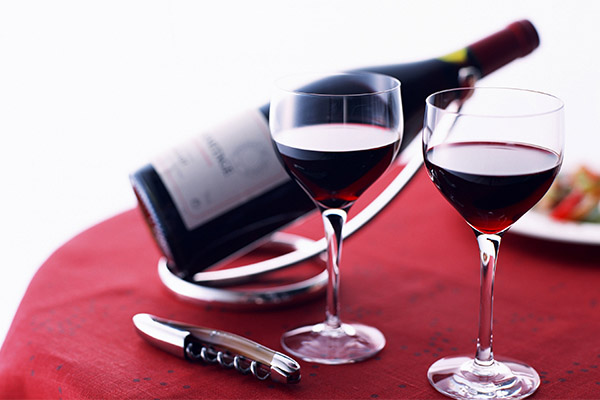
- The expression "To drink to health" appeared in Ancient Greece, where traditionally the host tasted the wine before the guests to show that it contains no poison.
- Women in ancient Rome were strictly forbidden to drink wine. A husband could kill his spouse for drinking, and it was not until 194 B.C. that this severe punishment was changed to divorce.
- The oldest wine bottle dates back to 325 A.D. It was discovered in Germany, near the town of Speyer.
- Champagne, according to the law of the European Union, is called only that drink, which is produced in France in the province of Champagne.
To drink or not to drink - everyone decides for himself. But sometimes you just want to enjoy a glass of the ancient magic drink, able to relax the body and soothe the soul!
«Important: All information on this site is provided solely for introductory purposes. Consult a specialist before applying any recommendations. specialist. Neither the editors nor the authors are liable for any possible harm caused by materials."

